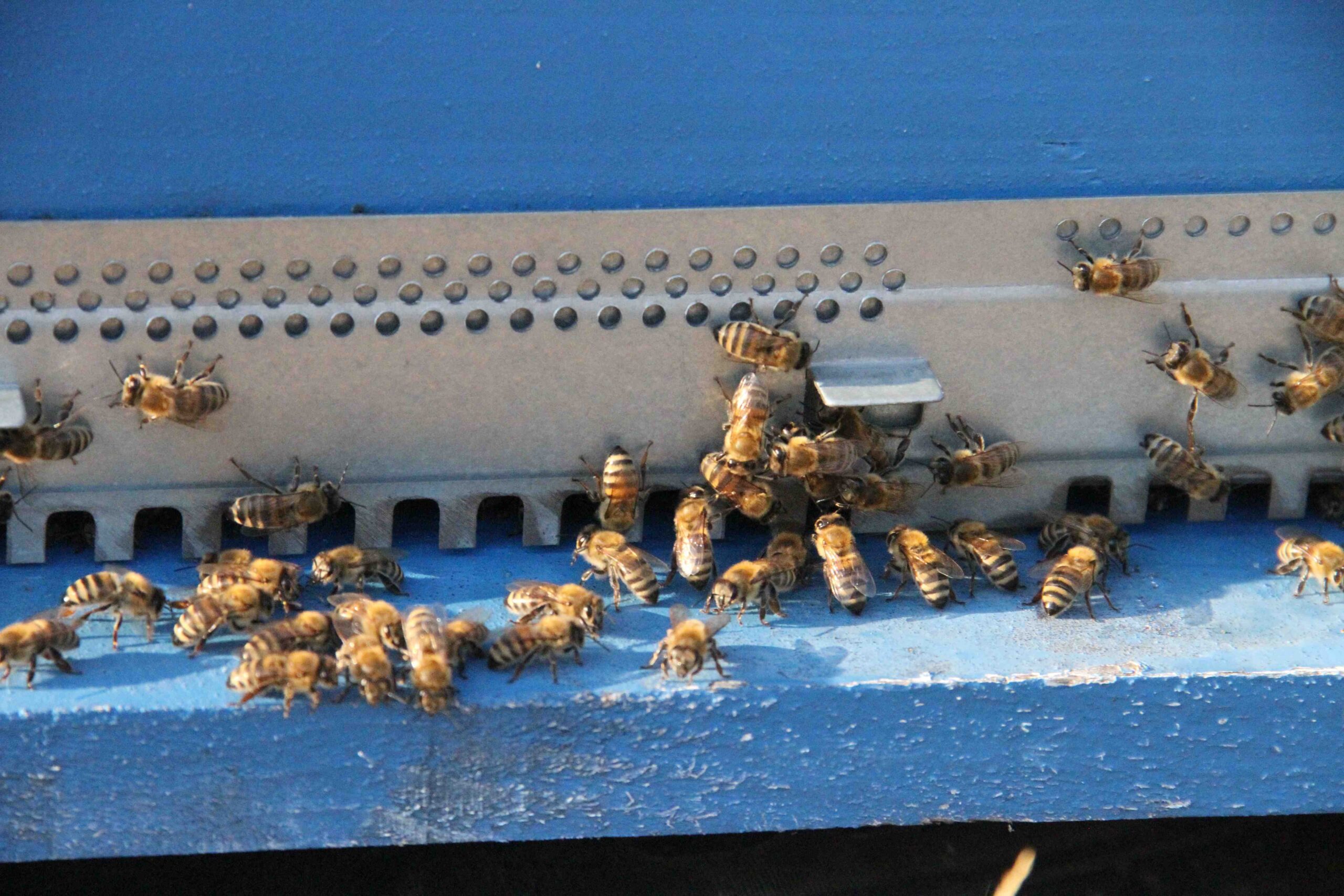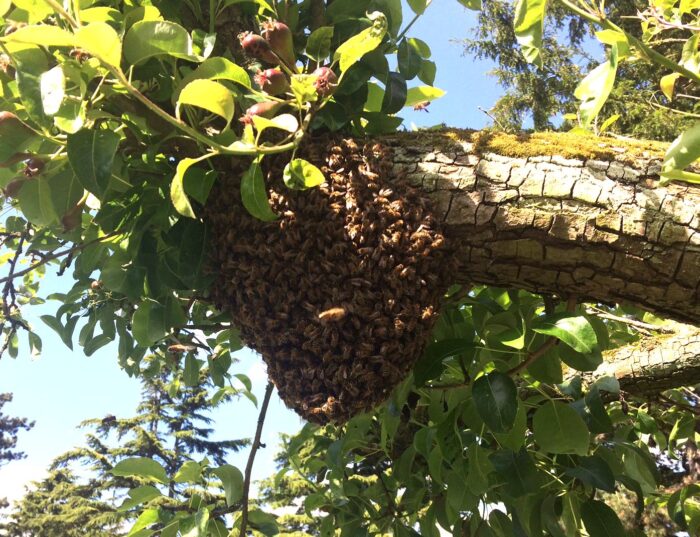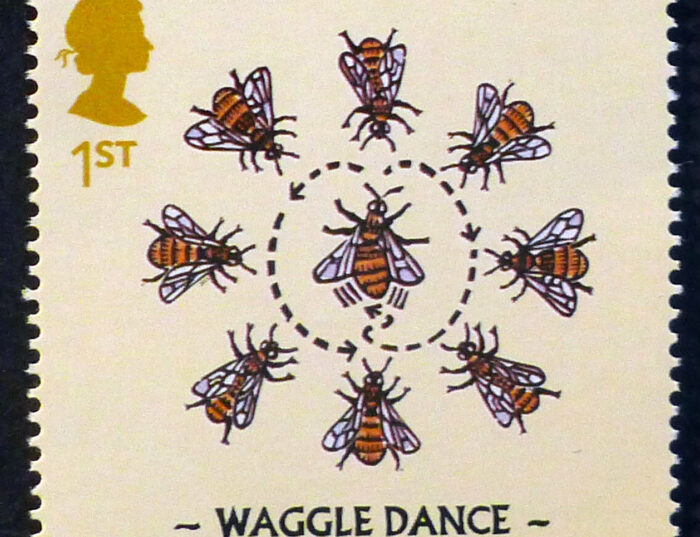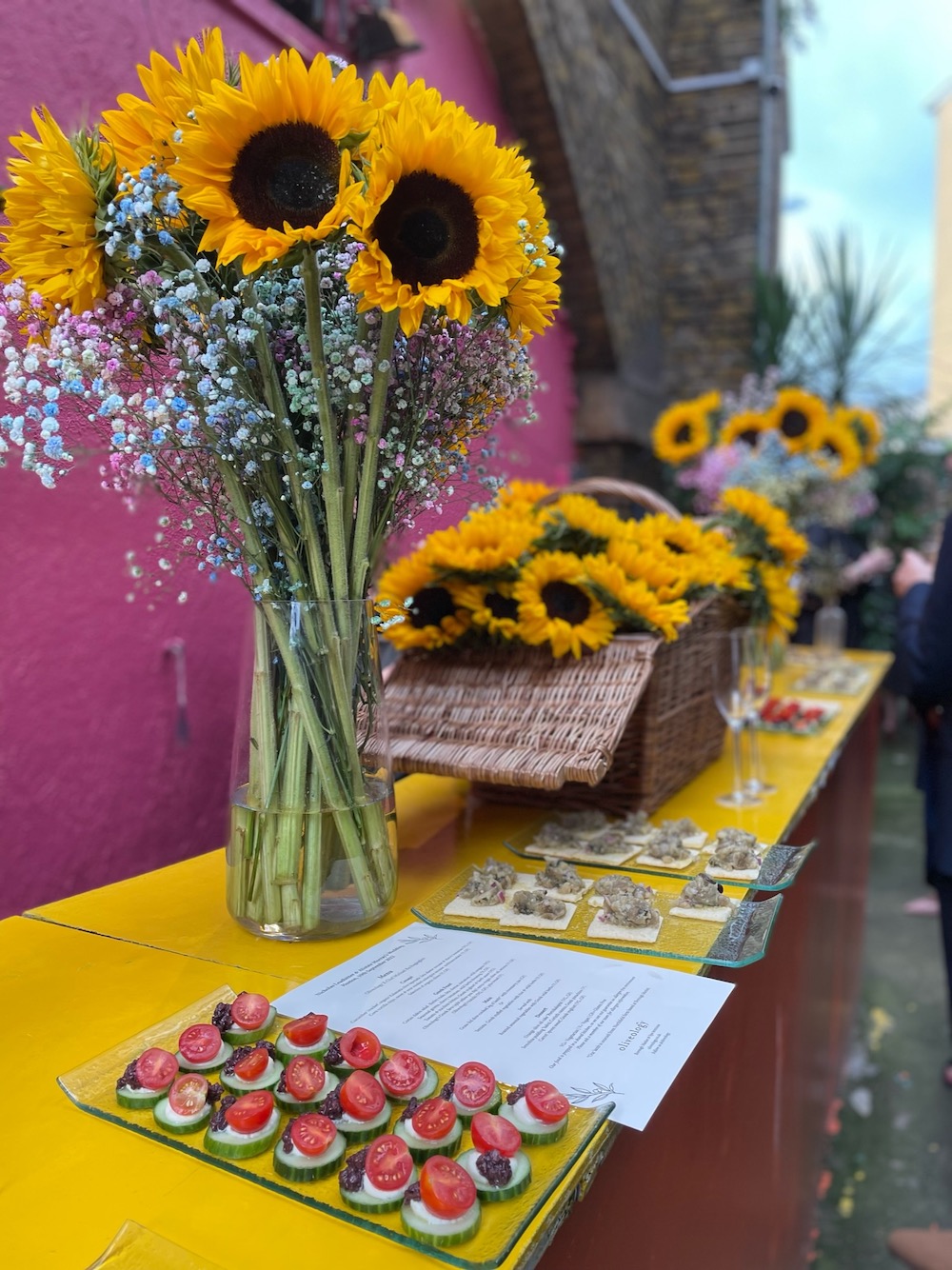Welcome to a series of blogs about bees, beekeeping and the natural environment by our resident beekeeper.
Welcome to spring! We are nearing the start of the swarming season for bees, and the busy season for beekeepers. Swarming is the process by which bees occupy new areas and increase their numbers by forming a new colony. The decision to swarm is made the previous summer. A well located colony (dry, well ventilated, proximity to forage) combined with a fair summer will give enough stores to last the winter, and allow the colony to start quickly in the spring. Foragers will look for new nest sites and communicate these using the waggle dance in a similar way to nectar/pollen, water or propolis sources. Experienced foragers are more trusted in this crucial process, and can be spotted by their damaged wings. In particular they are looking for a cavity of around 15-20L in volume, a defendable entrance, raised off the ground to reduce damp, facing the morning sun (E/SE) and preferably close to the existing colony to reduce chances of predation to the Queen.
In swarming, the Queen bee leaves the hive accompanied by mostly workers (females) with some drones (males). However the Queen is initially not ready for her departure. She is an egg-laying machine (1500+/day at peak fertility) and as such is extremely well fed by her courtiers. She must go on an extreme diet to slim down for flight. To achieve this they chase her around the hive for several days prior to swarming. Nipping her with their mandibles and reducing her rations until she is an appropriate weight for flight.
Before leaving, the departing bees gorge on honey, filling their stomach and crop. At around midday on the hottest day of the year so far, they spill from the hive in vast numbers, usually clustering on the front of the hive, before taking to the air en masse. They will then fly to a congregation spot chosen by foragers, where they cluster for warmth and protection, with the Queen somewhere in the centre, to minimise the risk of her predation. She is the only one capable of laying viable eggs at the new site, and they must protect her. Sometimes multiple queens can be found in the swarm, this may be a strategy used in areas with large numbers of predators.
A cluster of bees is an amazing sight. Foragers will be sent out for nectar and pollen. It is a fascinating to see foragers return to the cluster, and perform a waggle dance on the backs of her siblings (as obviously at this point they have no comb).
To be continued…




